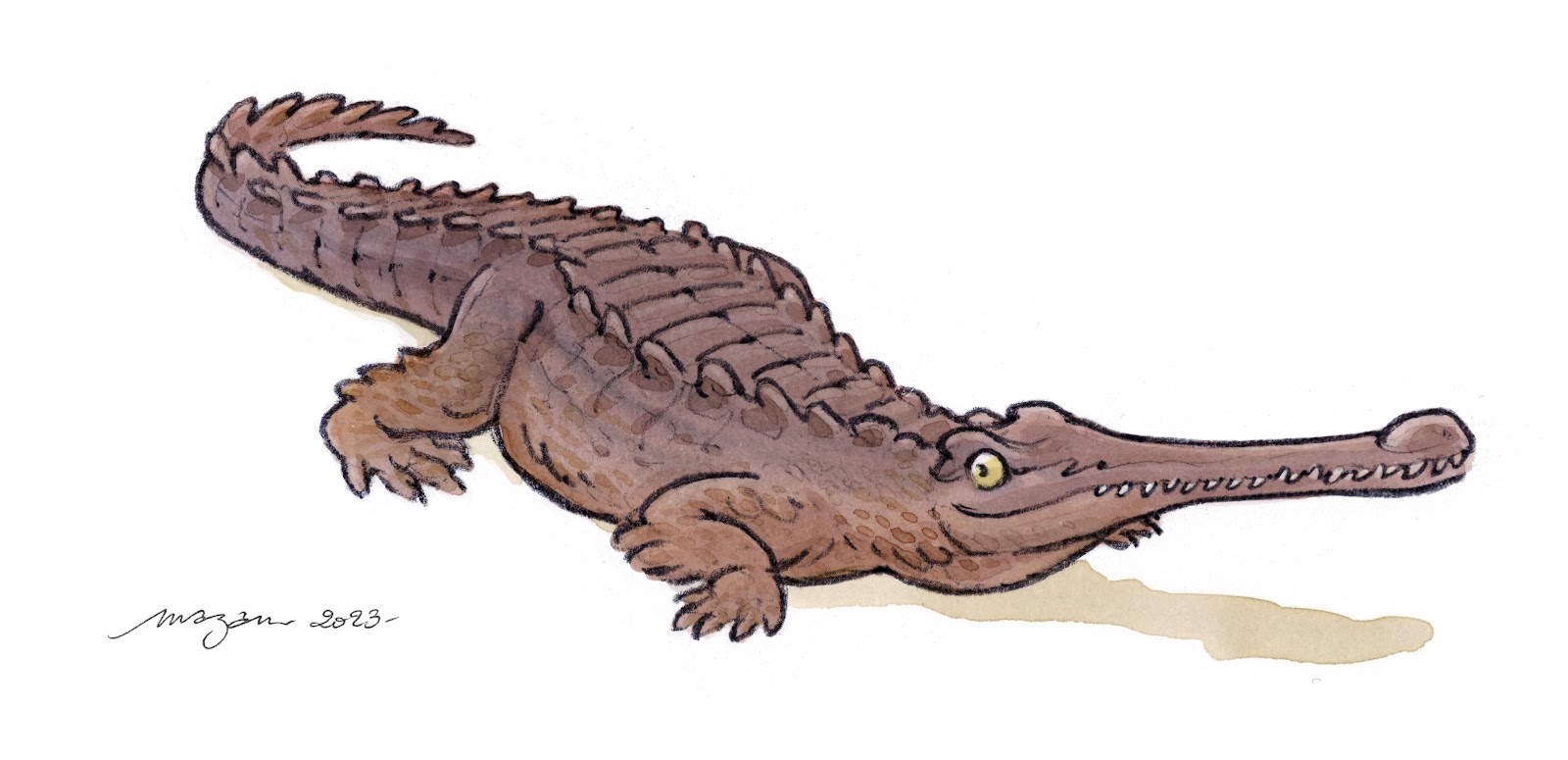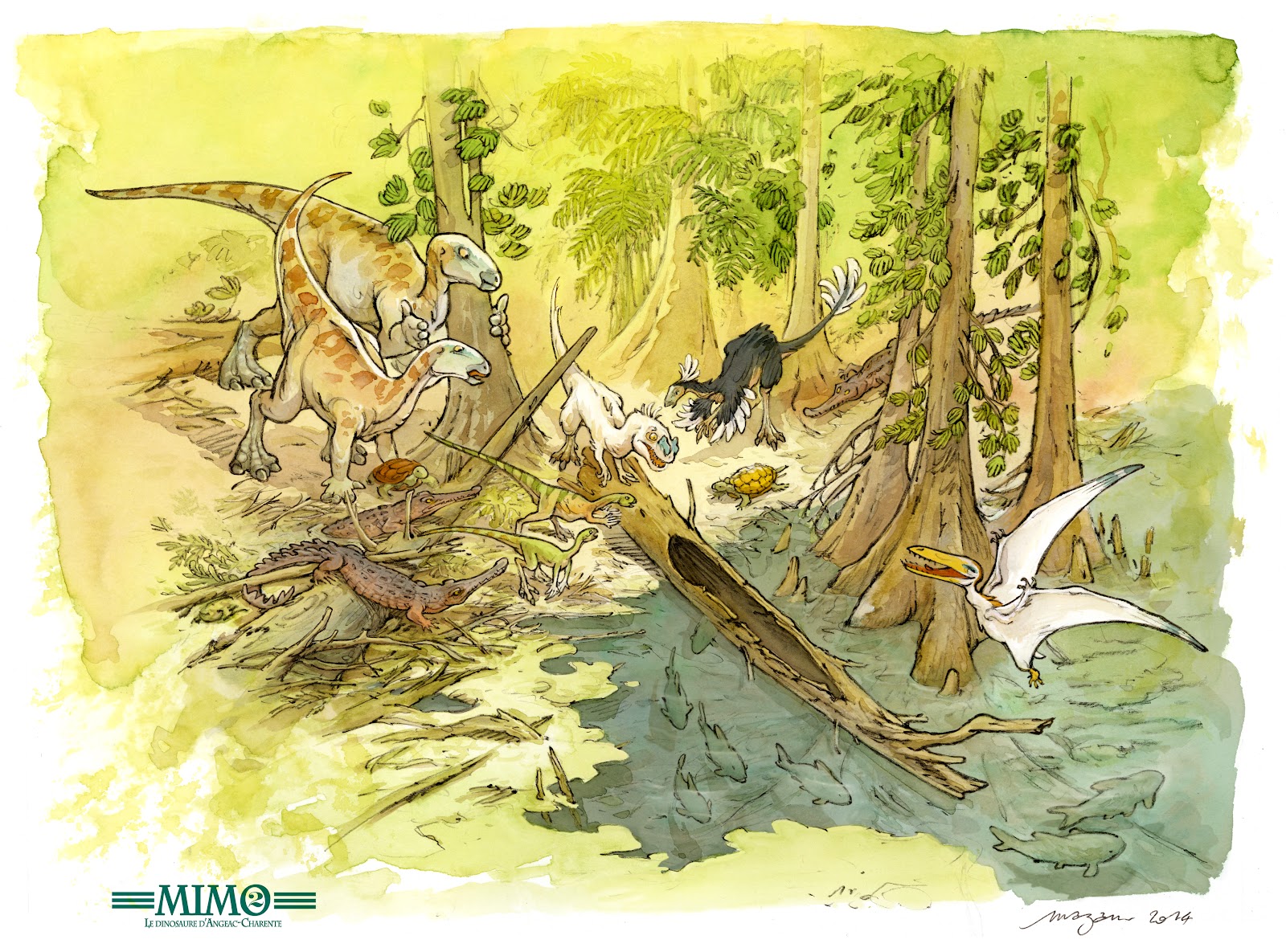Foss'il vous plait dixit :
En 2018, j'ai eu la chance d'aller fouiller à Angeac pour la première fois et j'ai trouvé, à part une patte de mimo, beaucoup de crocodiles notamment 7 ostéodermes et un coracoïde.
Je me demandais à qui cela pouvait appartenir. Pour le coracoïde, je ne sais toujours pas mais pour les ostéodermes, j'ai pu les comparer et apparemment ce serait des ostéodermes de pholidosaure.
Ainsi on a à Angeac deux gros crocodiles semi-aquatiques qui vivent en sympatrie. Les pholidosaures au sens large sont connus au Jurassique et au Crétacé ; ils avaient l'écologie de nos gavials actuels, sauf que certains, contrairement au gavial, pouvaient vivre dans les eaux côtières.
In "Mimo et les dinos des antipodes"
Éditions EIDOLA
Google trad:
In 2018, I had the chance to excavate in Angeac for the first time and, apart from a mimo leg, I found many crocodiles, including seven osteoderms and a coracoid.
I wondered who they might belong to. As for the coracoid, I still don't know, but I was able to compare the osteoderms, and apparently they were pholidosaur osteoderms.
Pholidosaurs are crocodilians with long rostra, allowing them to feed on fish, unlike the goniopholis, which is a generalist (it eats everything: dinosaurs, turtles, fish).
So, in Angeac, we have two large, semi-aquatic crocodiles that live sympatrically. Pholidosaurs, in the broad sense, are known from the Jurassic and Cretaceous periods; They had the ecology of our current gharials, except that some, unlike the gharial, could live in coastal waters.





Aucun commentaire:
Enregistrer un commentaire